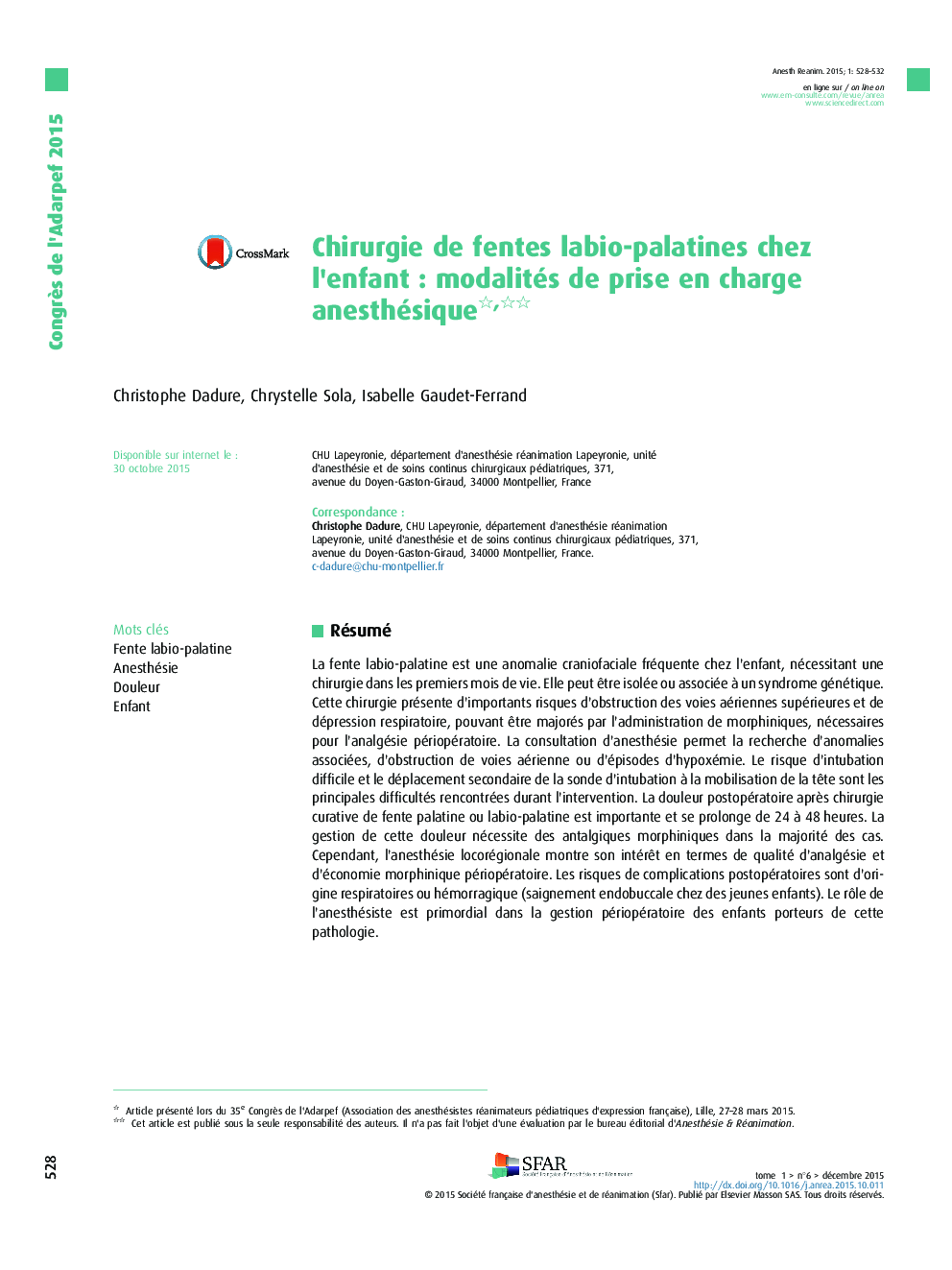| Article ID | Journal | Published Year | Pages | File Type |
|---|---|---|---|---|
| 2744046 | Anesthésie & Réanimation | 2015 | 5 Pages |
Abstract
Cleft lip and palate is a common craniofacial anomaly in children, needing surgery in the first months of life. This can be associated or not with a genetic syndrome. This surgery has significant risk of upper airway obstruction and respiratory depression, which may be increased by the administration of opioids, required for perioperative analgesia. The anaesthesia consultation allows to research associated abnormalities, airway obstruction or episodes of hypoxemia. The risk of difficult intubation and displacement of the endotracheal tube secondary to the mobilization of the head during surgery are the mains perioperative difficulties. Postoperative pain after cleft palate repair is high and extends from 24 to 48Â hours. The pain management requires opioid analgesics in most cases. However, regional anaesthesia has shown its value in terms of quality of analgesia and perioperative opioid economy. The risks of postoperative complications are respiratory or haemorrhagic (bleeding endobuccal in young children). The role of the anaesthesiologist is crucial in the perioperative management of children with this disease.
Related Topics
Health Sciences
Medicine and Dentistry
Anesthesiology and Pain Medicine
Authors
Christophe Dadure, Chrystelle Sola, Isabelle Gaudet-Ferrand,
